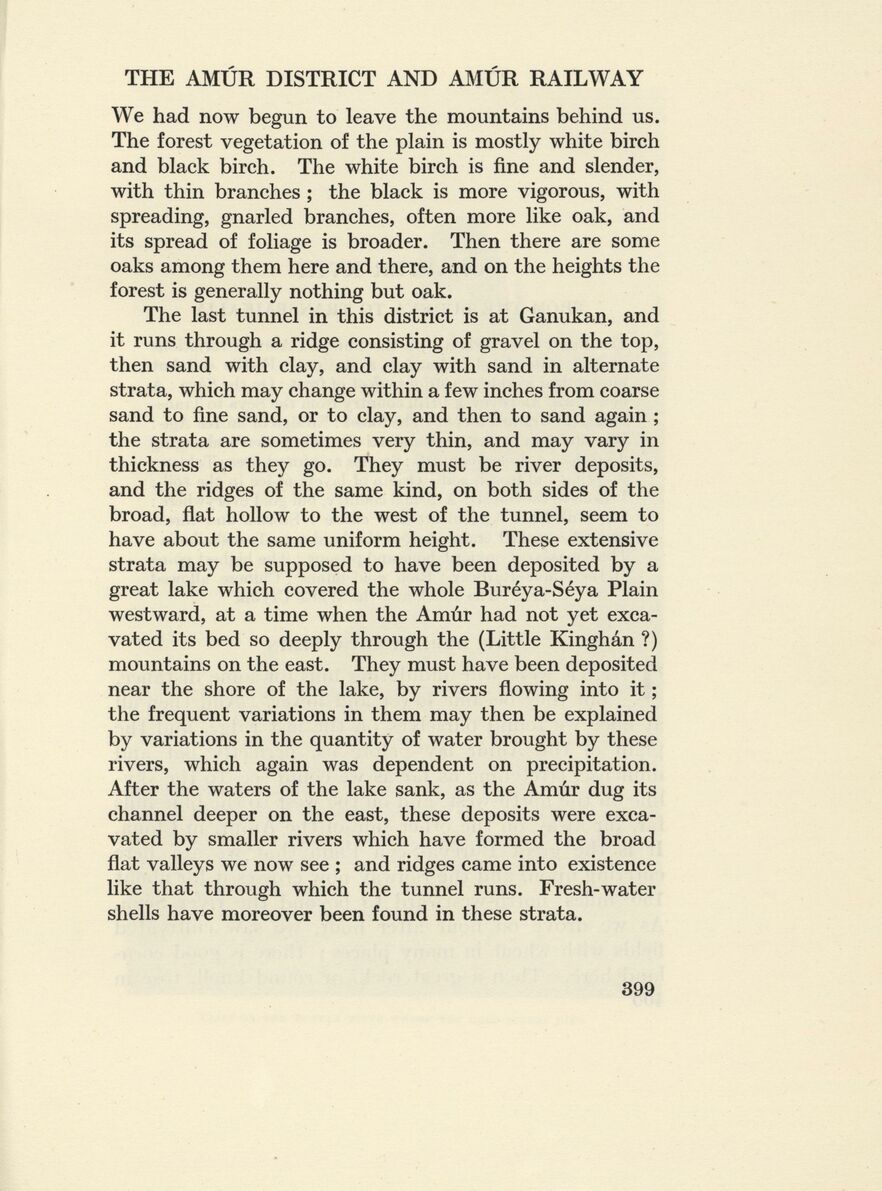
Full resolution (JPEG) - On this page / på denna sida - XVII. The Amúr district and the Amúr railway

<< prev. page << föreg. sida << >> nästa sida >> next page >>
Below is the raw OCR text
from the above scanned image.
Do you see an error? Proofread the page now!
Här nedan syns maskintolkade texten från faksimilbilden ovan.
Ser du något fel? Korrekturläs sidan nu!
This page has never been proofread. / Denna sida har aldrig korrekturlästs.
THE AMUR DISTRICT AND AMUR RAILWAY
399
Wc had now begun to leave the mountains behind us.
The forest vegetation of the plain is mostly white birch
and black birch. The white birch is fine and slender,
with thin branches ; the black is more vigorous, with
spreading, gnarled branches, often more like oak, and
its spread of foliage is broader. Then there are some
oaks among them here and there, and on the heights the
forest is generally nothing but oak.
The last tunnel in this district is at Ganukan, and
it runs through a ridge consisting of gravel on the top,
then sand with clay, and clay with sand in alternate
strata, which may change within a few inches from coarse
sand to fine sand, or to clay, and then to sand again ;
the strata are sometimes very thin, and may vary in
thickness as they go. They must be river deposits,
and the ridges of the same kind, on both sides of the
broad, flat hollow to the west of the tunnel, seem to
have about the same uniform height. These extensive
strata may be supposed to have been deposited by a
great lake which covered the whole Buréya-Séya Plain
westward, at a time when the Amiir had not yet exca
vated its bed so deeply through the (Little Kinghån ?)
mountains on the east. They must have been deposited
near the shore of the lake, by rivers flowing into it ;
the frequent variations in them may then be explained
by variations in the quantity of water brought by these
rivers, which again was dependent on precipitation.
After the waters of the lake sank, as the Amiir dug its
channel deeper on the east, these deposits were exca
vated by smaller rivers which have formed the broad
flat valleys wc now see ; and ridges came into existence
like that through which the tunnel runs. Fresh-water
shells have moreover been found in these strata.
<< prev. page << föreg. sida << >> nästa sida >> next page >>